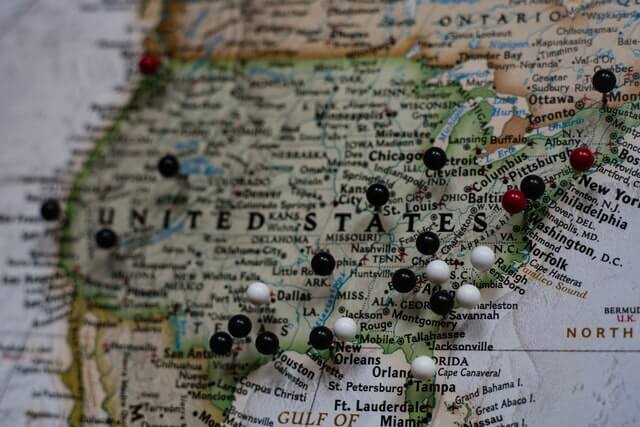For a third week, U.S. hotel occupancy remained just above 57% and 54% on a total-room-inventory basis (TRI), which accounts for temporarily closed hotels.
NB: This is an article from STR
Room demand fell slightly with the weekly level staying above 21 million for a seventh consecutive week. A closer look revealed that room demand dropped during the weekdays and increased over the weekend. Weekend occupancy advanced week over week to 71%, with room demand up 1.1%. Notably, Saturday’s room demand was the highest recorded since 15 February 2020 with occupancy at 73% (69% TRI).
Subscribe to our weekly newsletter and stay up to date

Last week, we reported that weekdays had grown the most over a four-week period versus a similar four-weeks in March. We thought this was a signal of increasing business demand. With that in mind, we established an algorithm to select “business” hotels to act as a barometer. While we are still refining the model, these Top 25 urban hotels saw their occupancy fall to 41% this week from their four-week average of 44%. Before this week, these hotels had seen stable occupancy over the fortnight. Overall, weekday demand fell across the U.S. with only 43% of markets reporting demand growth week over week versus 51% a week ago. Orlando, Dallas, and Cleveland (NFL Draft) had the largest weekly increase this week. The slowdown in weekday demand was also noted among the three big demand states, Texas, Florida, and California.
Occupancy distribution among hotels saw little change in the week. More than half of all reporting hotels had weekly occupancy above 60%. There were still nearly 3,000 hotels (8% of all reporting hotels) with occupancy below 30% for the week. The largest percentage of these hotels (41%) was in Small Metro/Town and Suburban locations outside of the Top 25. There has been significant progress for large hotels (300+ rooms). At the beginning of February, 70% of large hotels reported occupancy below 30% countrywide. In the most recent week, only 30% of large hotels reported occupancy below that threshold. While a few more hotels fell into the under 30% occupancy category this week, it is encouraging.
Week-on-week hotel ADR increased 0.6% with the weekend gain up by more than 1%. Overall, industry-wide ADR hit a three-week high (US$109). Despite this, ADR indexed to the same week in 2019 fell to its lowest level of the past six weeks (82).

On the surface, the market recovery monitor seems better as more markets were in the “green” zone. However, it is important to note that there are less markets in Peak this week than in the previous three weeks. Also, the number of markets in Depression increased slightly. New York, San Francisco, and Boston continued to occupy the bottom of the list with RevPAR indexed to 2019 below 25. Total U.S. RevPAR indexed to 2019 is still in the recession category and at its lowest level of the past seven weeks.

Outside the U.S., the comparison to 2019 is became worse as more markets were in the Depression category and less in Peak or Recovery. While occupancy in the U.K. remained low (28%), the country had the largest demand increase of any country outside the U.S., reflecting the end of board-based restrictions. Demand gains were also seen in other European countries including Spain, Italy, and Portugal.

The recovery will continue, but we don’t expect dramatic, widespread gains until late into the month. We do of course expect to see pockets of progress in markets here and there. We are also encouraged to see better results among large hotels. We know that the road to full recovery of these hotels and most others will take time. And even with increased demand and the expected summer surge, the damage from the pandemic will be measured in years not months.
About the MRM
When the U.S. hotel industry reached the one-year anniversary of the earliest COVID-19 impact, year-over-year percentage changes became less actionable when analyzing performance recovery. Thus, STR introduced a weekly Market Recovery Monitor that categorizes each STR-defined market based on an indexed comparison with the same time periods in 2019. An index is simply a ratio that divides current performance by the benchmark (2019 data).
For example, during the week ending 6 March 2021, U.S. RevPAR was $48.13. In the comparable week from 2019, hotel RevPAR was $87.75. This produces an index of 54.8 ($48.13/$87.75*100), meaning RevPAR was slightly more than half of what it was in 2019.
We use an index to place each market in one of four categories: depression (index <50), recession (index between 50 and 79.9), recovery (index between 80 and 99.9), and peak (index >=100). Additionally, we highlight other top market performances that contribute to higher levels of recovery across the U.S.





